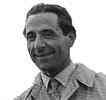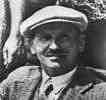

 The history of the Lancia Aurelia, the first automobile moved by a 6V engine, began during the Second World War. At that time engineer Francesco De Virgilio, expert in the difficult problem of the 6V engines balancing, was charged by Lancia to examine a precedent project of a crankshaft for a 39°, 6V engine. De Virgilio concluded the analysis observing that the only solution for a satisfactory operation was to increase the V angle up to the optimal value of 60°. After the end of the war Lancia, planning a new series of the Aprilia, realized a new 1569 cm3 engine, but with 45° angle, the maximum value allowed by the car engine bonnet . The prototype ran during all 1947, but the following year the evolution of the Aprilia was definitely abandoned, in favour of a completely new model, the Aurelia. The history of the Lancia Aurelia, the first automobile moved by a 6V engine, began during the Second World War. At that time engineer Francesco De Virgilio, expert in the difficult problem of the 6V engines balancing, was charged by Lancia to examine a precedent project of a crankshaft for a 39°, 6V engine. De Virgilio concluded the analysis observing that the only solution for a satisfactory operation was to increase the V angle up to the optimal value of 60°. After the end of the war Lancia, planning a new series of the Aprilia, realized a new 1569 cm3 engine, but with 45° angle, the maximum value allowed by the car engine bonnet . The prototype ran during all 1947, but the following year the evolution of the Aprilia was definitely abandoned, in favour of a completely new model, the Aurelia. The technical direction of the new plan was committed to the genius of Vittorio Jano, from 1937 responsible of the "Reparto Esperienze Lancia" and before father of the Alfa Romeo P2, 1750, 2300, 2900 and P3. While Jano devoted himself to the development of the chassis (for example the rear indipendent suspension), De Virgilio, with the collaboration of Ettore Zaccone-Mina, designed a 6V engine according to his theoretical convictions, adopting the definitive solution of the 60° angle. The technical direction of the new plan was committed to the genius of Vittorio Jano, from 1937 responsible of the "Reparto Esperienze Lancia" and before father of the Alfa Romeo P2, 1750, 2300, 2900 and P3. While Jano devoted himself to the development of the chassis (for example the rear indipendent suspension), De Virgilio, with the collaboration of Ettore Zaccone-Mina, designed a 6V engine according to his theoretical convictions, adopting the definitive solution of the 60° angle. |